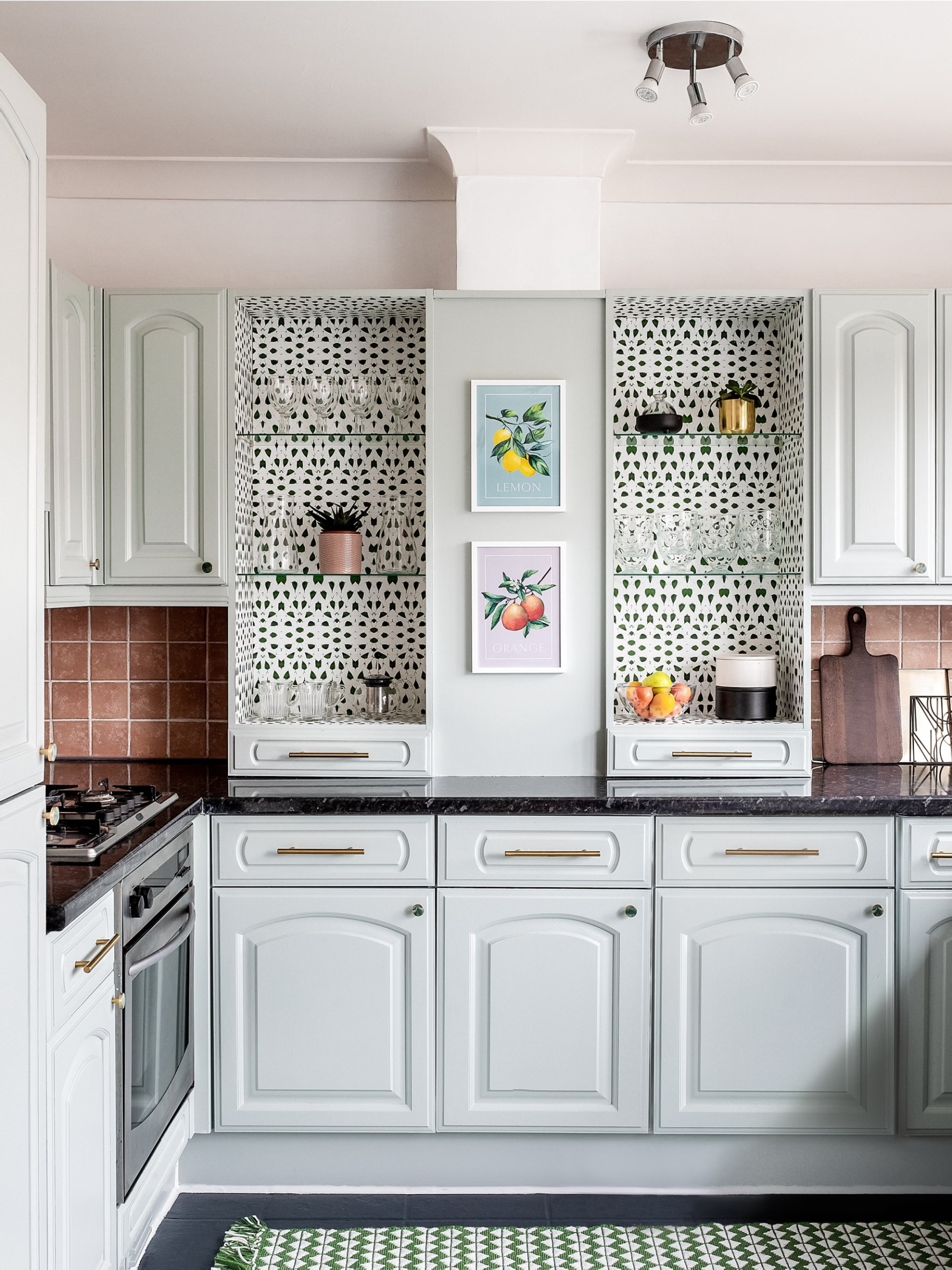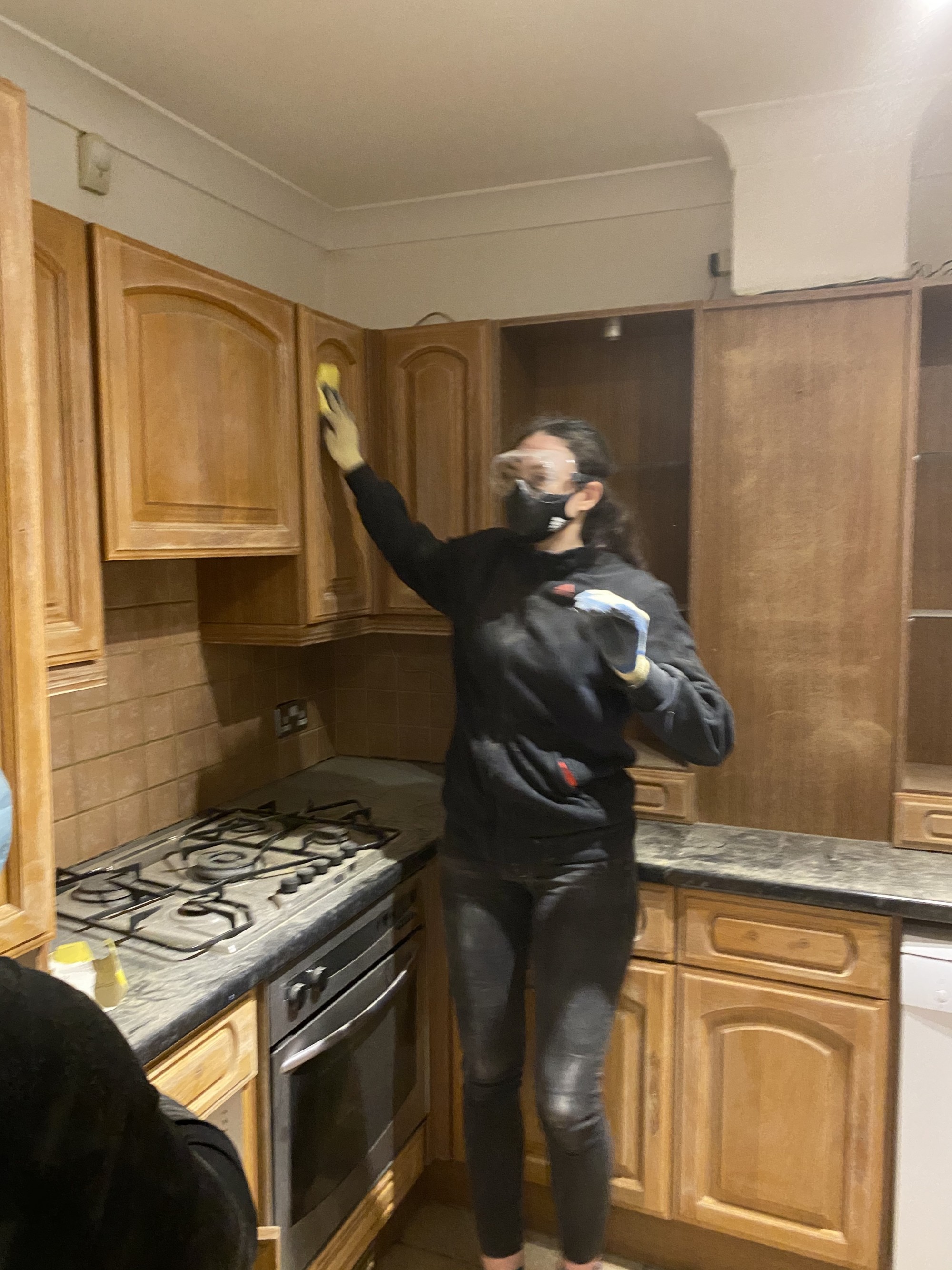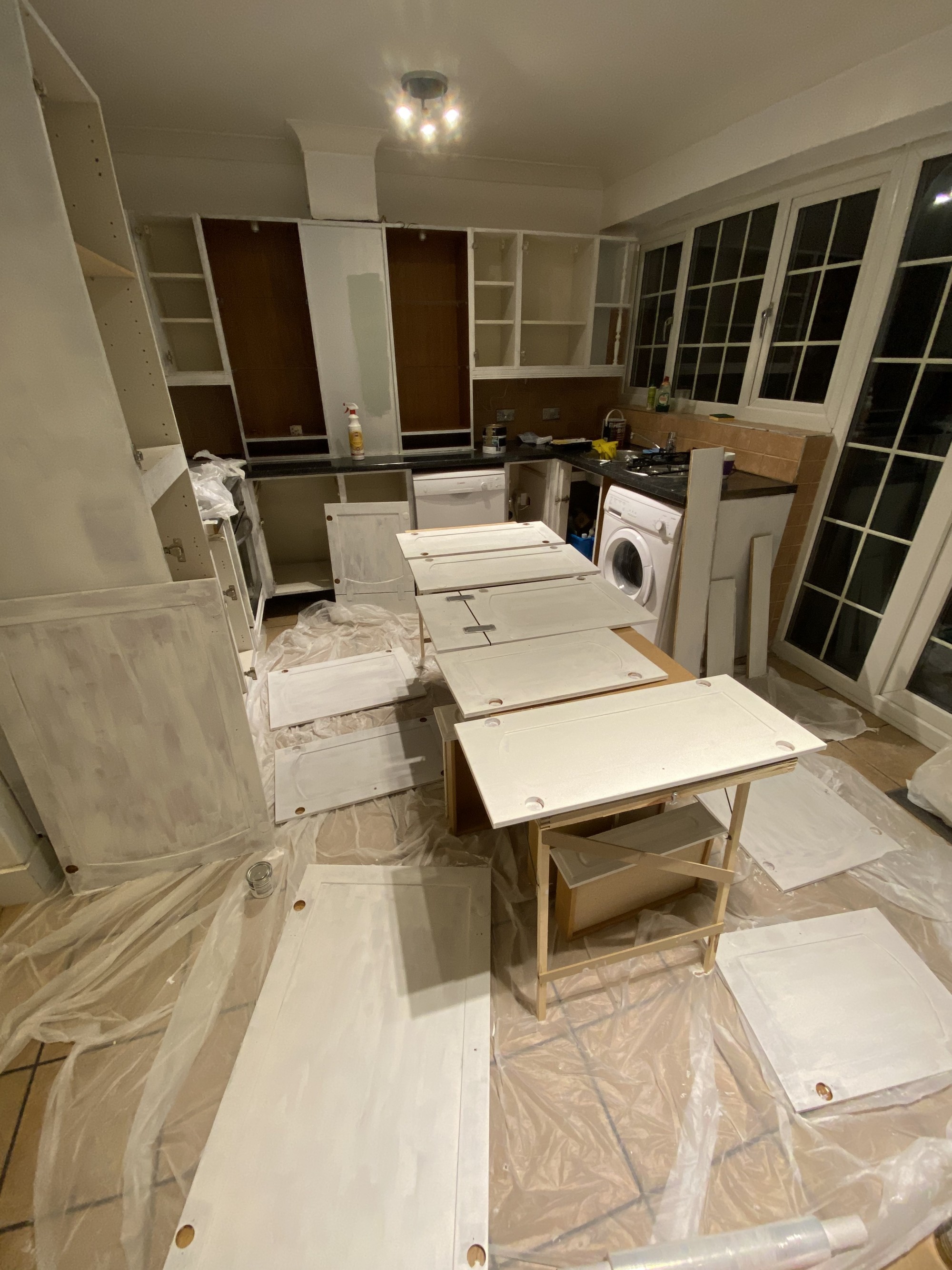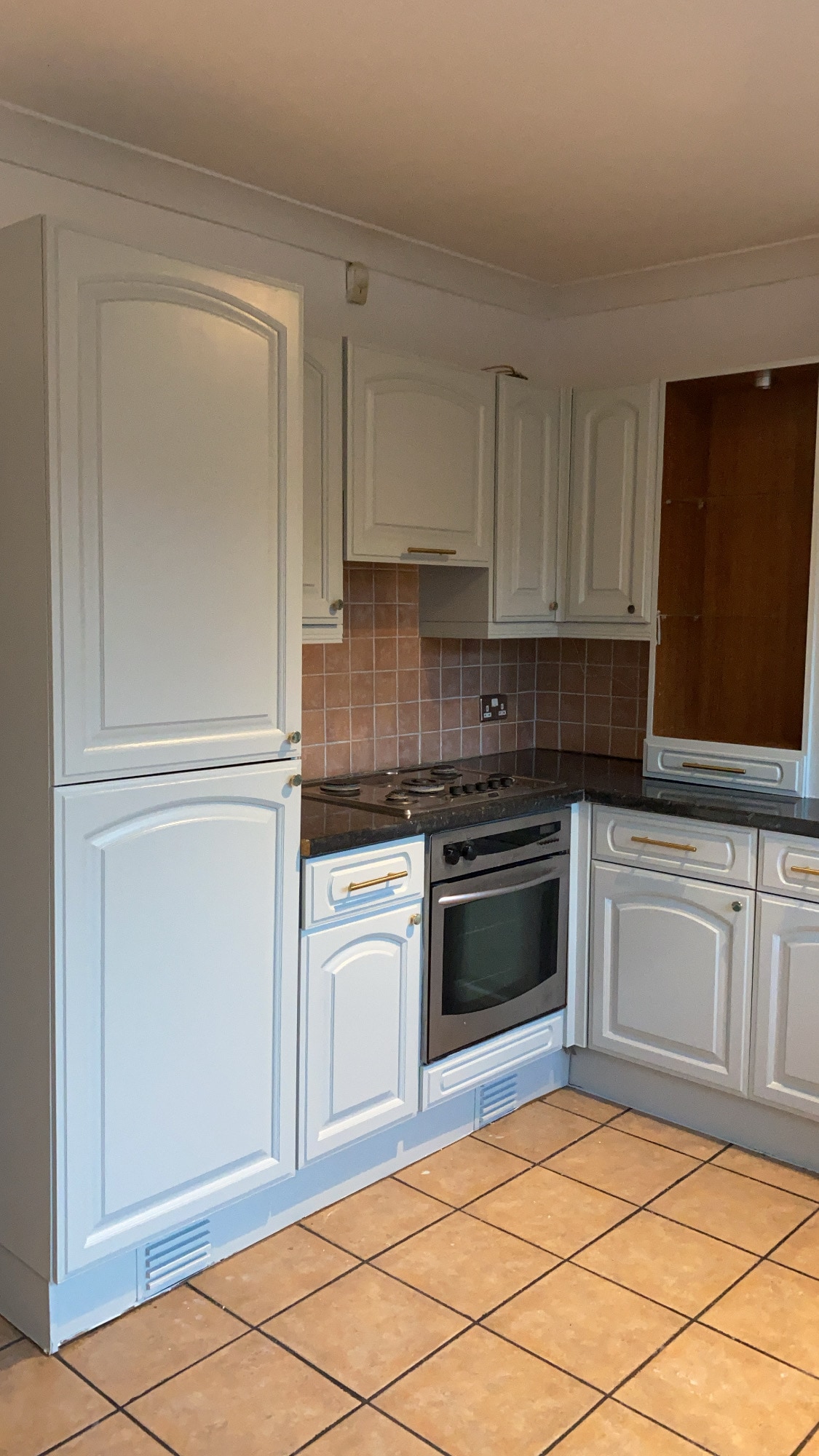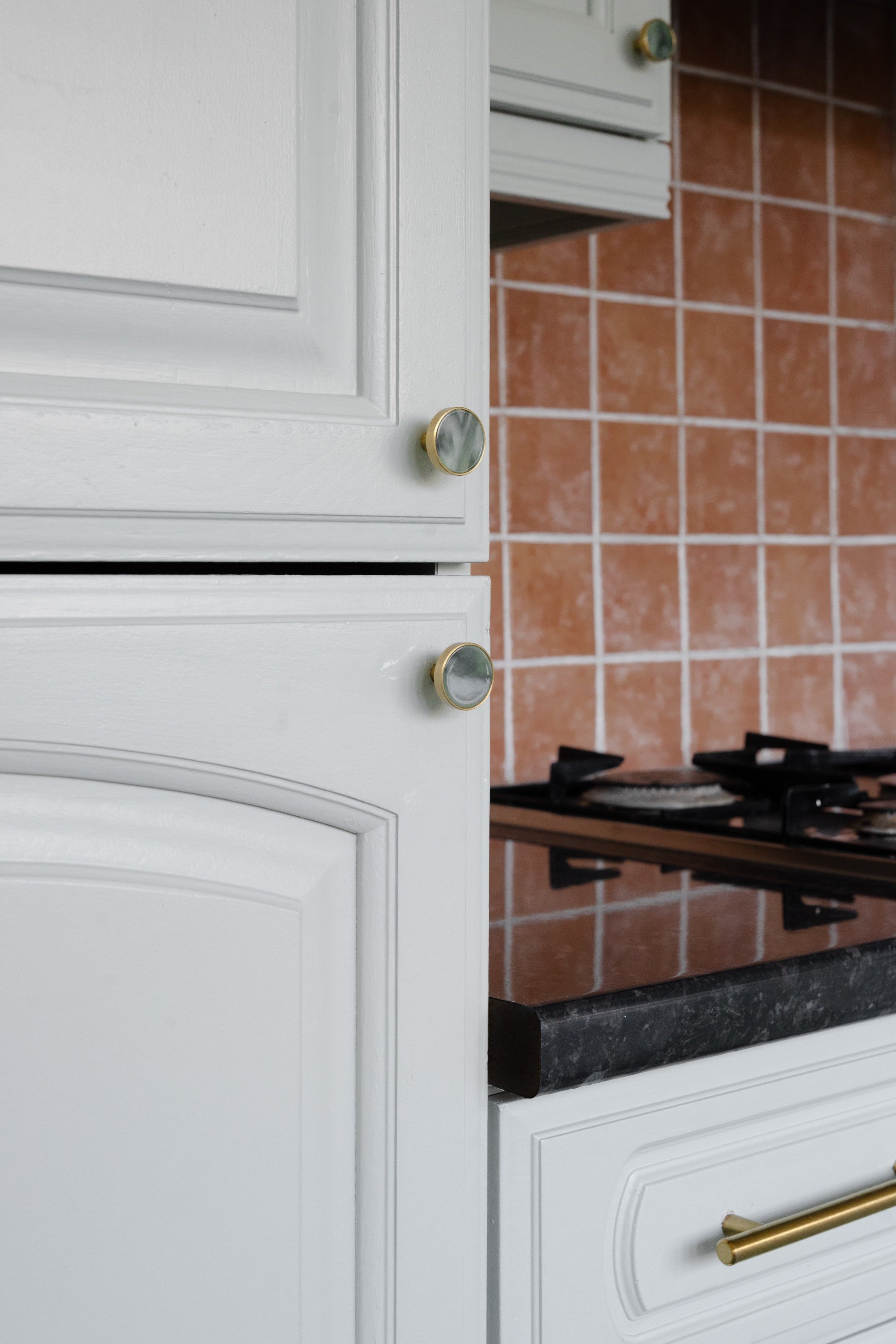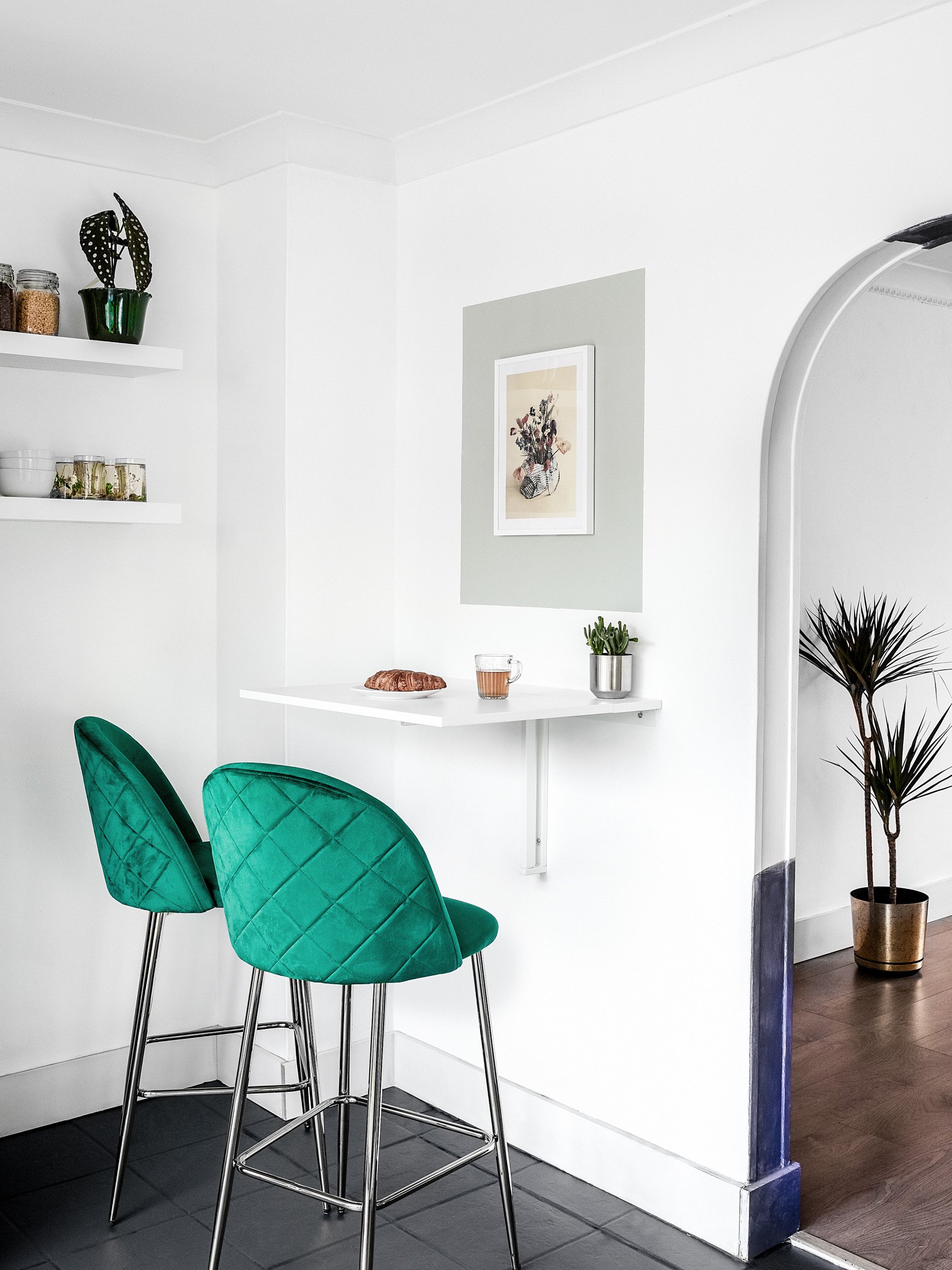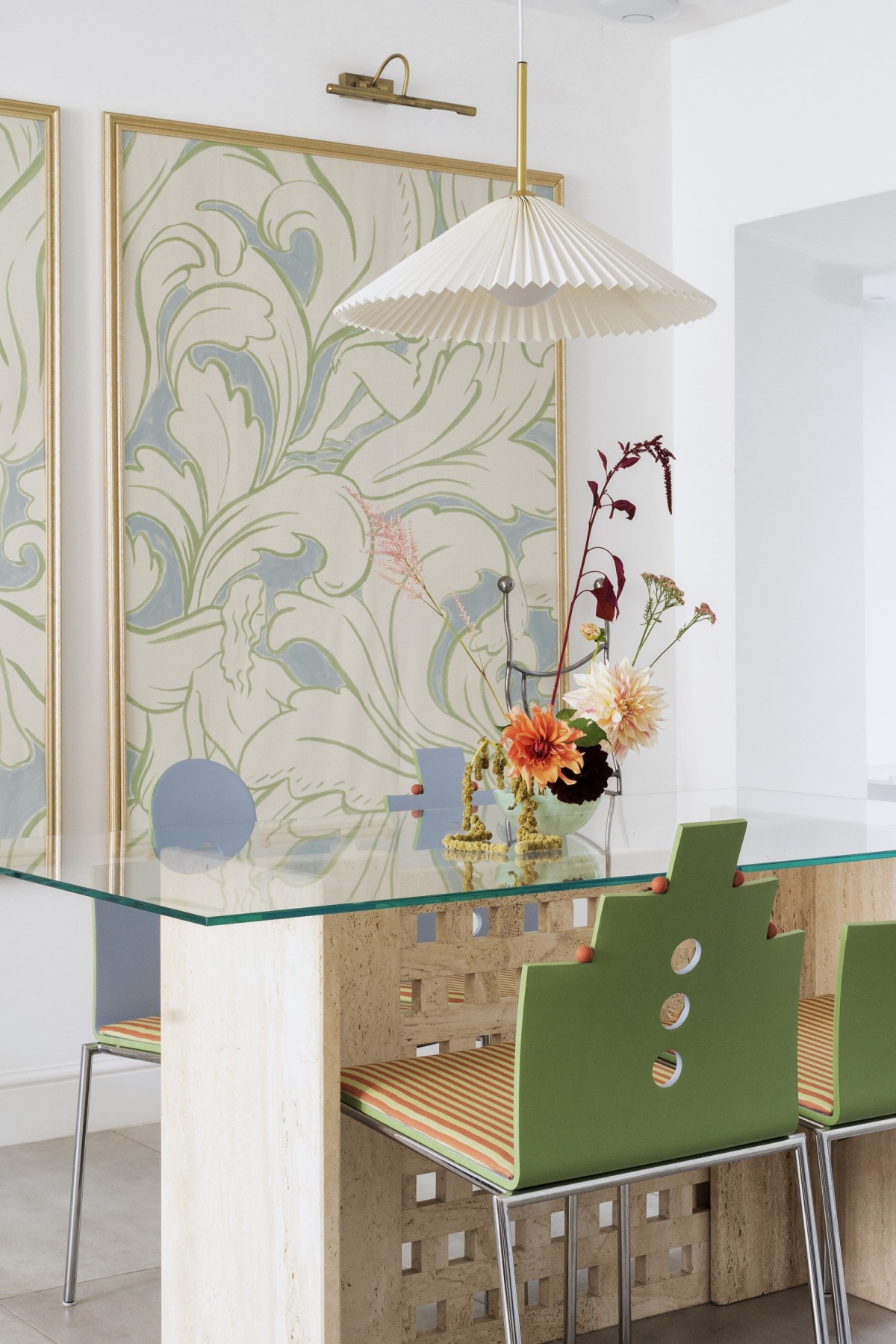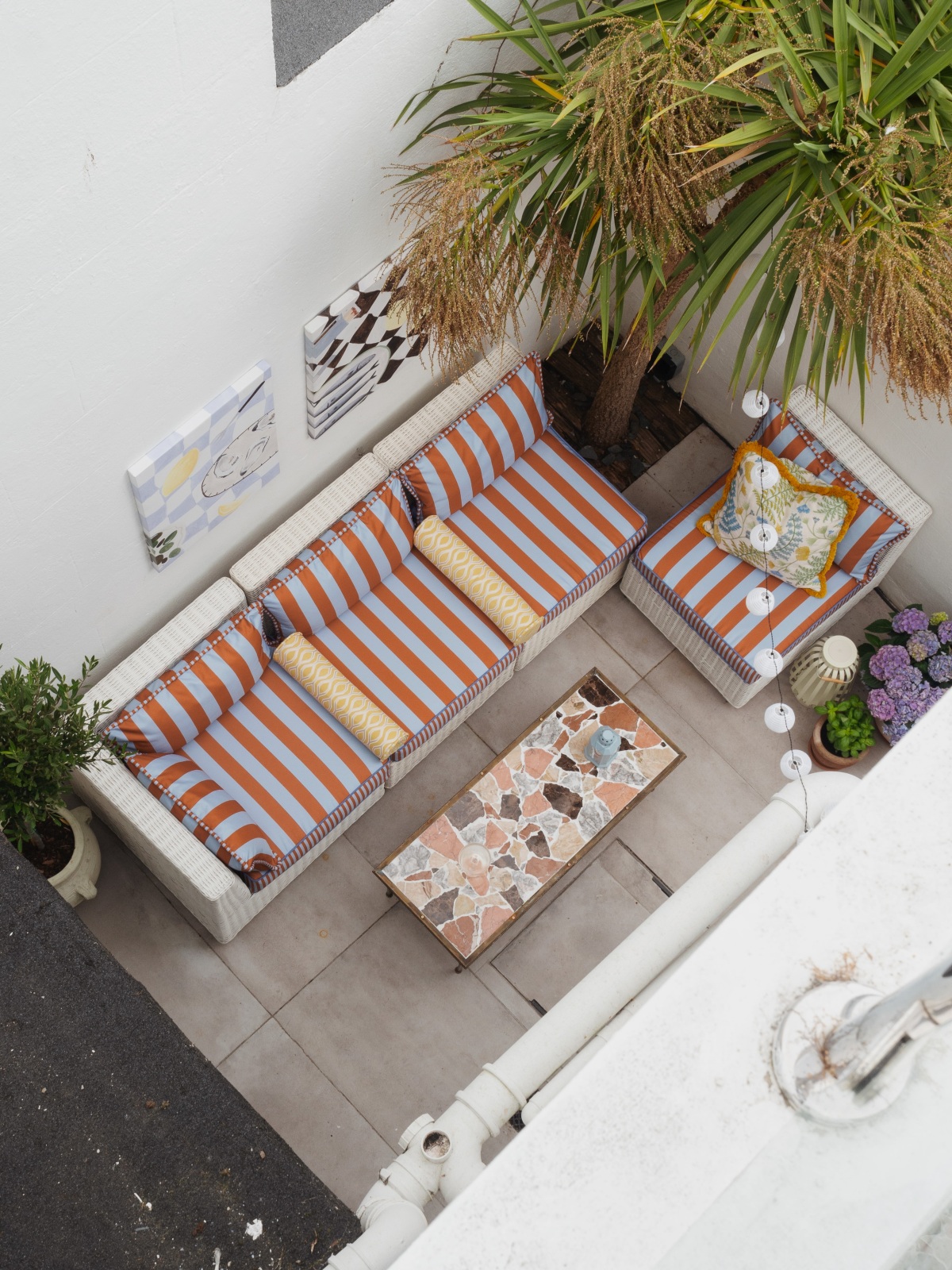I recently completed a pro bono project for which I decorated a 3 bedroom house for a refugee family coming to settle in the UK. I wrote extensively about it here but decided to keep the biggest transformation — the kitchen — for a separate article so that I could share all the details and learnings we made along the way with those of you looking to transform your own kitchen.
The original kitchen was made of wooden cabinet doors and brown veneer carcasses with a cornice at the top of the cabinets. It also had ornamental brass handles from the 90s (or older?), old-fashioned glass doors, brownish grout on the backsplash, and yellow floor tiles. We invested a whole lot of time to turn it into a modern and friendly kitchen with sage green cabinets, brass handles, and a charcoal-painted tile floor using nothing but paint (and a whole lot of perseverance). The crown jewel of the new kitchen was the wallpaper by Ottoline De Vries on the inside of the cabinets that had previously been hidden behind the tinted glass door.
